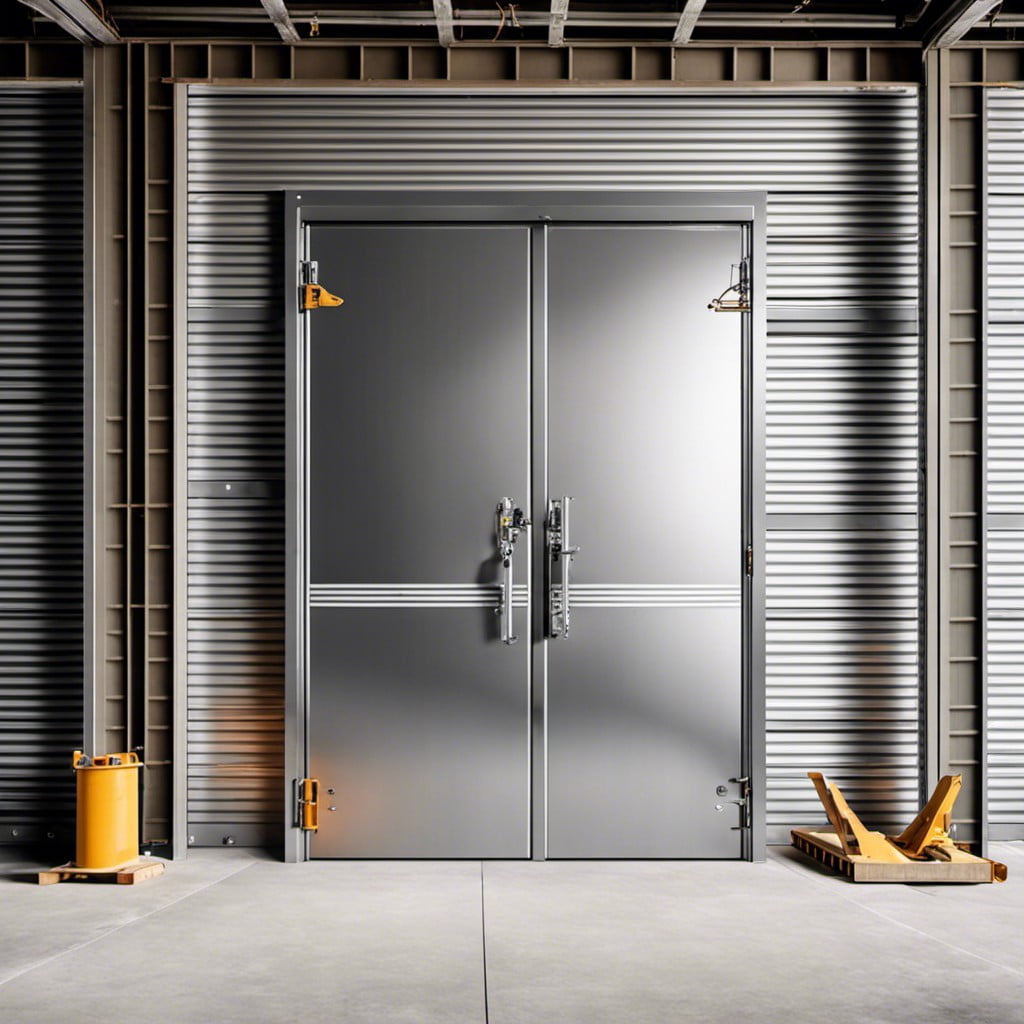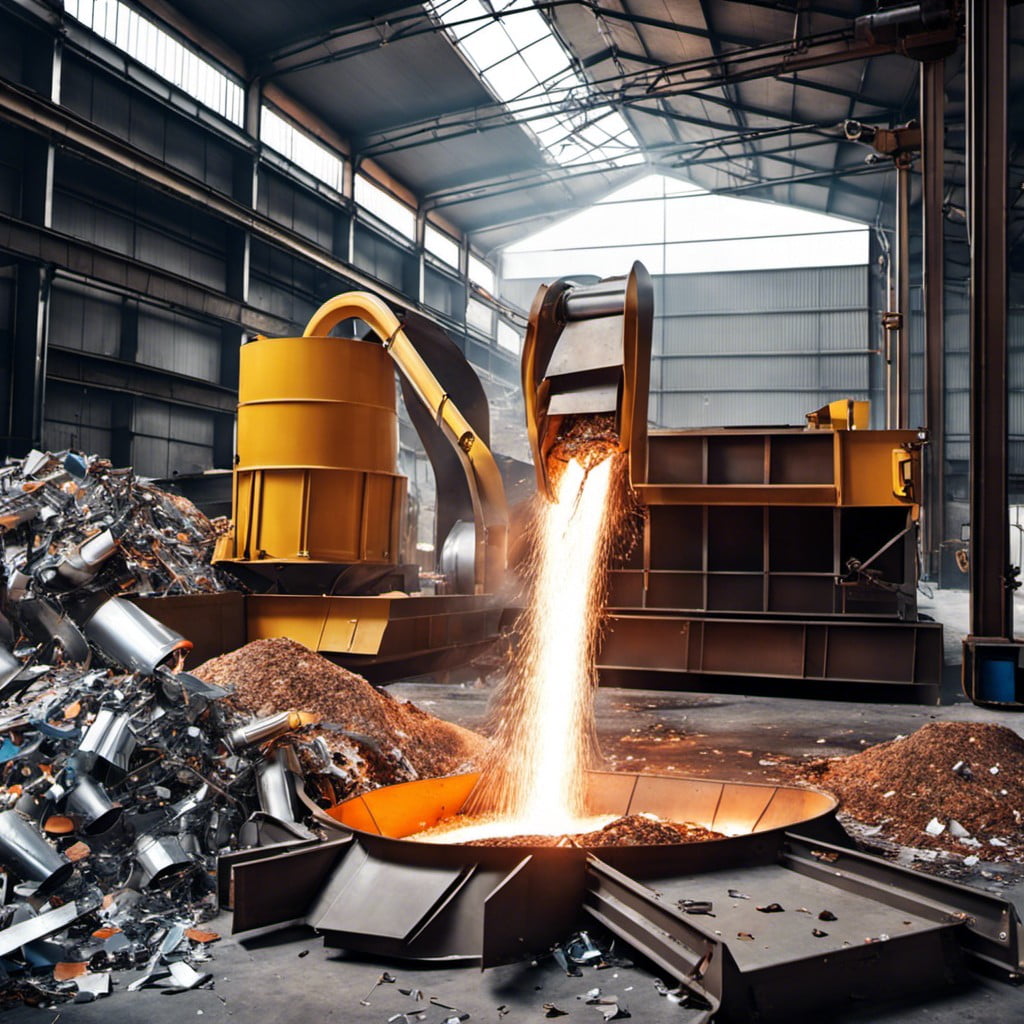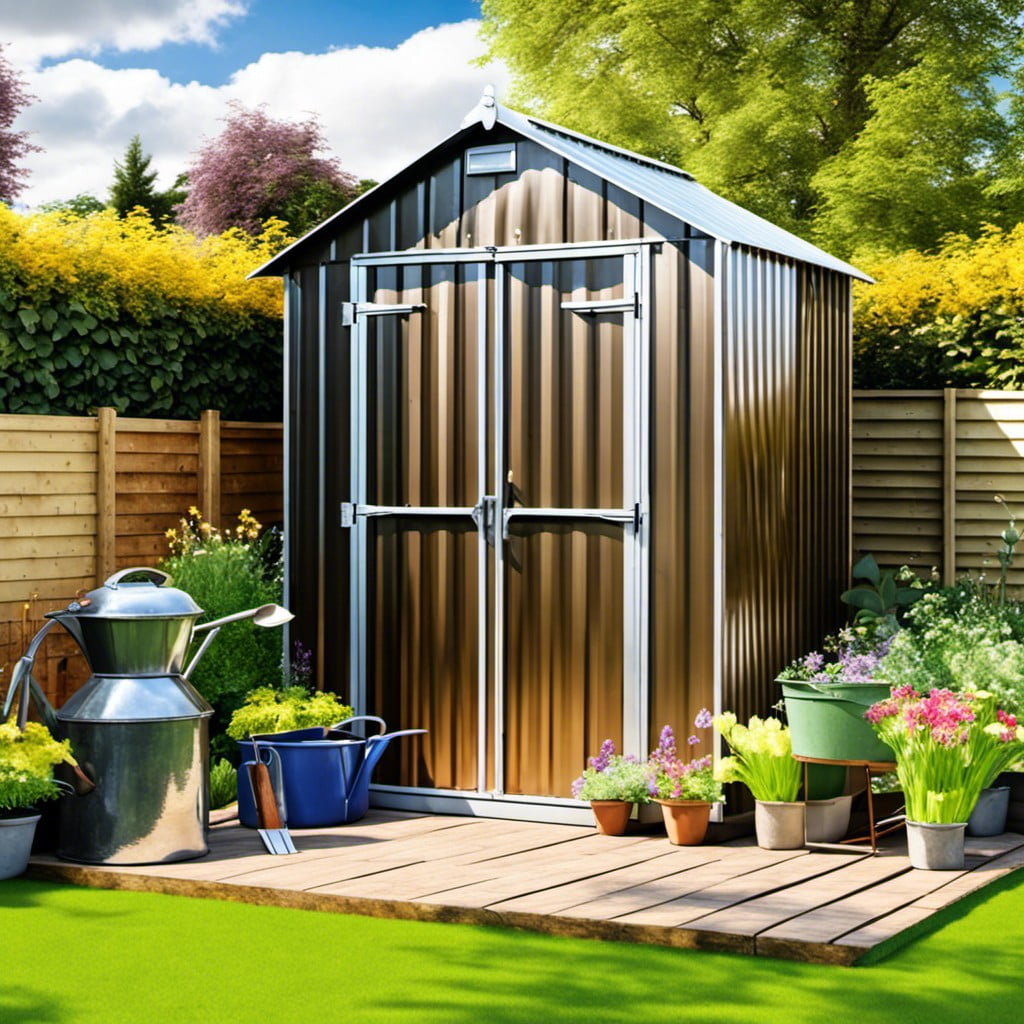Dive into the fascinating world of metal doors as we explore their varied uses, durability and overall popularity in modern construction.
The metal construction industry is a dynamic sector, with metal doors being a significant component of this market. As per recent statistics, the global metal doors market size was valued at USD 74.8 billion in 2020 and is expected to grow at a compound annual growth rate (CAGR) of 3.8% from 2021 to 2028.

This growth is primarily driven by increasing construction activities globally and the rising demand for energy-efficient doors. This article will delve into the detailed statistics of the metal doors industry, covering aspects such as market segmentation, growth factors, challenges, and future trends. Stay tuned for a comprehensive overview of these statistics.
Metal doors are stronger than traditional wood and fiberglass doors.
With an inherent robustness, these doors offer greater resistance to damage and break-ins, bestowing an upper hand in terms of security. This increased strength also translates into superior durability, reducing potential repair and replacement costs in the long run.
It is noteworthy that even in harsh weather conditions, metal doors demonstrate impressive resilience, outperforming their wooden and fiberglass counterparts in terms of deformation, warping, or cracking. Thus, their strength becomes a critical factor in safety, longevity, and cost-effectiveness.
Metal doors market size was valued at $15.7 billion in 2021 and is projected to reach $26.1 billion by 2031.
In 2021, the metal doors sector amassed a significant $15.7 billion in value. This robust industry shows no signs of slowing down, with statistics suggesting an upward curve.
It is anticipated that by 2031, the value will have surged to a hefty $26.1 billion. This projection foretells a thriving decade for metal doors manufacturers and suppliers, and marks an exciting era for the industry.
The growing global construction activities, coupled with the increased demand for secure and durable doors, act as propellors, driving this market momentum. It’s essential to stay informed of this sector’s trajectory when making decisions related to production, investment, or purchases within the metal doors industry.
There’s a market growth at a CAGR of 5.2% from 2022 to 2031.
Moving forward, the metal doors industry’s progressive trajectory is slated to continue. Notably, with an impressive CAGR of 5.2%, it will span a period from 2022 to 2031. This growth is reflective of a shift in homeowners’ and construction companies’ preferences towards more durable and secure options. Therefore, given these statistics, it can be inferred that the demand for metal doors will keep accelerating over the next decade.
Steel has a 3-hour fire rating. Which means it could last for 3 hours during a fire.
When it comes to fire safety, steel doors stand out. They possess a remarkable fire rating, capable of withstanding a fire for as long as three hours. This attribute plays an important role in preventing fires from spreading, allowing ample time for evacuation and minimizing structural damage.
This long-lasting barrier between flames and uncharred building sections makes them an essential component in residential and commercial zones alike. Additional treatments can further enhance this fire resistance, underscoring steel doors as a top choice for safety-conscious consumers.
For metal doors, the standard option is 24-gauge which is 0.020 inches thick and weighs about 1.15 pounds per square foot.
Considering the material properties, 24-gauge is often utilized as the standard thickness for metal doors. This equates to a thickness of approximately 0.020 inches.
Factoring in the robustness of the material, a door of this gauge would weigh roughly 1.15 pounds per square foot – a testament to the substantial strength and durability metal doors offer.
Utilizing a gauge of this magnitude increases resistance to damage, ensuring longevity, and offers a superior safeguard against external impacts compared to other door materials.
A basic steel door costs between $150 and $300 while you can expect to pay between $200 and $500 for a fire-rated steel door.
At the lower end of the pricing spectrum, basic steel doors offer an affordable solution without compromising on durability or performance. With a relatively modest investment ranging from $150 to $300, you will obtain a sturdy, secure entry point for your premises.
However, as safety considerations become more crucial, especially in certain industrial or commercial contexts, you may wish to explore the alternative of fire-rated steel doors. Though slightly more costly, standing between $200 and $500, these are engineered to withstand fire for extended periods, providing an invaluable layer of protection against potential fire hazards.
The extra cost is a worthwhile consideration for the enhanced safety they bring.
A residential steel door cost ranges between $150 – $400 while a commercial steel door costs between $1200 – $2400.
Housing or residential properties typically lean towards steel doors, due to their durability and aesthetics. A common price point for this type ranges from a modest $150 to a heftier sum of $400.
On the other hand, commercial entities – factories, offices, warehouses – frequently opt for a more robust version of steel doors. The heft and structural integrity command a significantly higher price, starting at $1200 and climbing up to $2400.
The variances in cost can be attributed to factors such as the dimensions of the door, the technicalities involved in its construction, and the specific grade of steel used.
The most common metal for door installation are 304 and 316 stainless steel.
Specially designed for durability and aesthetics, 304 and 316 stainless steel remain the top choices in manufacturing doors. The high demand for these materials is evident due to their superior corrosion resistance, making doors long-lasting, even in varying climates.
Selecting between the two often boils down to the door’s intended use and location. The significant addition of molybdenum in 316 makes it more resistant to pitting and crevice corrosion, ideal for doors in coastal or marine environments. Conversely, 304, being more cost-effective, suffices for general-purpose indoor and outdoor applications.
Therefore, understanding the subtle differences between these stainless steel variants can guide an informed decision for door installation, balancing longevity and cost-effectiveness.
Door installation costs an average of $750. The cost for a replacement for a basic door ranges between $150 to $700.
Taking average expenses into account, it’s essential to set aside around $750 for the overall installation of a metal door. Figures can vary, with some installations taking up less funds, especially when replacing a basic door.
In these instances, expenditure ranges from a modest $150 to around $700. These estimates could potentially vary based on the complexity of the fitting process, the doorway’s size, and additional labor time involved, among other factors.
Therefore, prior research and obtaining multiple quotes is always advisable when planning a door replacement project.
The cost for a front door and frame is between $800 to $4000.
Offering an extensive choice in terms of aesthetic appeal, functionality, and security, a range of options are available regarding the price of metal doors and accompanying frames. These costs may be as low as $800, offering a practical and sturdy solution.
However, for more elaborate or custom configurations supply increased protection levels or enhanced visual appeal, prices may rise as high as $4000. This variance reflects the multitude of factors influencing final costs such as the specific type of metal used, the inclusion of features like thermal insulation or windows, and the complexity of the door frame’s design.
It’s essential for potential buyers to assess their specific needs against their budget to make the most cost-effective choice.
References:
- https://www.steelcraft.com/
- https://www.alliedmarketresearch.com/
- https://steeldoor.org/
- https://www.angi.com/
- https://www.doorclosersusa.com/




